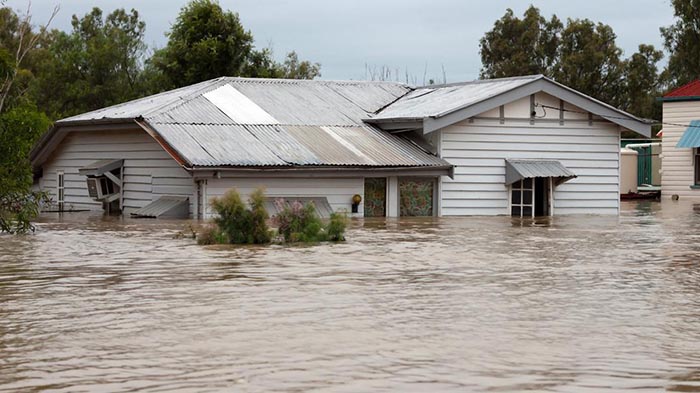When Disaster Strikes: Geographies of house and contents under-insurance
Climate Risk and Resilient social-ecological systems
Research Themes Project
Overview
When natural disasters strike, house and contents insurance provides a key safety net of modern Australian life. Yet many households are under-insured or not insured at all. The geographies of inadequate insurance, including crucial post-disaster impacts, remains unknown. What is known is that governments and communities tend to bear the costs.
This project will collect national data to determine rates of non- and under-insurance, identify key indicators and factors that influence these rates, and investigate disaster survivor’s insurance experiences. This research will strategically improve disaster policy and practice, and contribute to reducing the financial and social costs of disasters to governments, communities and householders.
Find out more about how you can
Partner with us or Study with us.

Are we properly insured against an extreme future?
Floods, fires and other extreme weather events are part of Australian life.
Impact and Engagement
House and contents insurance is a key safety net in modern Australian life and is identified as critical to the nation’s effective management of natural disaster events. Many Australians are experiencing severe financial and social impacts of such disasters. In 2011 alone, there were eight official natural disasters comprising catastrophic bushfires, cyclones, severe storms, and large-scale flood events resulting in $5 billion losses and approximately 275,000 insurance claims (ABC 2012), while halfway through the 2015/2016 Australian summer, the disaster bill had already reached $515 million (Pash 2016). The frequency and intensity of disaster events are also predicted to increase due to climate change (Booth & Williams 2012). With householders increasingly reliant upon housing assets for personal financial security (Searle & Smith 2010), and growing populations and concentration of wealth in disaster-prone areas, disaster-related costs are on the rise (Foster et al. 2013; Schmidt et al. 2010). Yet house and contents insurance remains a poorly understood, under-developed and under-utilised mechanism in disaster management.
Evidence from major bushfires suggests that the rate of house and contents non-insurance and under-insurance in high risk areas is likely to be significant. A survey of survivors of the 2013 Blue Mountain fires where around 200 properties were destroyed, indicates that 82% of those who suffered a total loss of their homes were under-insured (Legal Aid NSW 2014). The estimated amount of under-insurance ranged from $100,000-500,000 for homes, and $40,000-200,000 for contents. In the 2009 Victorian Black Saturday bushfires where over 2000 homes were destroyed about 13% of all property losses were not insured (Teague et al. 2010). The average uninsured loss for each natural disaster in Australia between 2004 and 2011 is estimated at almost one billion dollars (Lloyds 2012).
Despite the importance of house and contents insurance in disaster management, there are no independent, robust data for rates of non-insurance and under-insurance in Australia. Little is known about the factors that contribute to these rates, such as socio-economic and geographic indicators. Furthermore, comprehensive research on claimants’ experiences following disasters and the impact of their experience upon recovery is non-existent. There is therefore urgent need for research into this key mechanism for disaster management, as well as for collaborative policy development and implementation (Booth & Harwood 2015; Booth & Williams 2012).
See references.
People
Dr Eliza de Vet
University of Wollongong
Travis Young
Pennsylvania State University
References
- ABC (2012) Radio National: AM with Tony Eastley 23/2/12, Australian Broadcasting Corporation, Sydney,
- Booth, K. & Harwood, A. (2015) ‘Insurance as Catastrophe: A geography of house and contents insurance in a bushfire prone area’, Geoforum 69: 44-52.
- Booth, K. and Williams, S. (2012) Is insurance as an under-utilised mechanism in climate change adaptation? The case of bushfire management in Tasmania. Australian Journal of Emergency Management 27(4): 38-45.
- Foster H, Towers B, Whittaker J, Handmer J, Lowe T, 2013, “Peri-urban Melbourne in 2012: changes and implications for the Victorian emergency management sector” Australian Journal of Emergency Management 28(3) 6-11
- Legal Aid NSW (2014) Response to Issues Paper on Natural Disaster Funding Arrangements: Legal Aid NSW submission to the Productivity Commission (PDF).
- Lloyds (2012) Lloyd’s Global Underinsurance Report. London: The Society of Lloyds.
- Pash, C. (2016) ‘Halfway through the Australian Summer and the disaster bill is already $515 million’, Business Insider Australia.
- Schmidt S, Kemfert C, Höppe P, 2010, “The impact of socio-economics and climate change on tropical cyclone losses in the USA” Regional Environmental Change 10 13-26
- Searle B A, Smith S J, 2010, “Housing wealth as insurance: insights from the UK”, in The Blackwell Companion to the Economics of Housing: The Housing Wealth of Nations Eds S J Smith, B A Searle (Wiley-Blackwell, Chichester, UK) pp 339-360
- Teague, B., McLeod, R. and Pascoe, S. (2010) Victorian Bushfire Royal Commission: Final Report. Melbourne: Parliament of Victoria.


